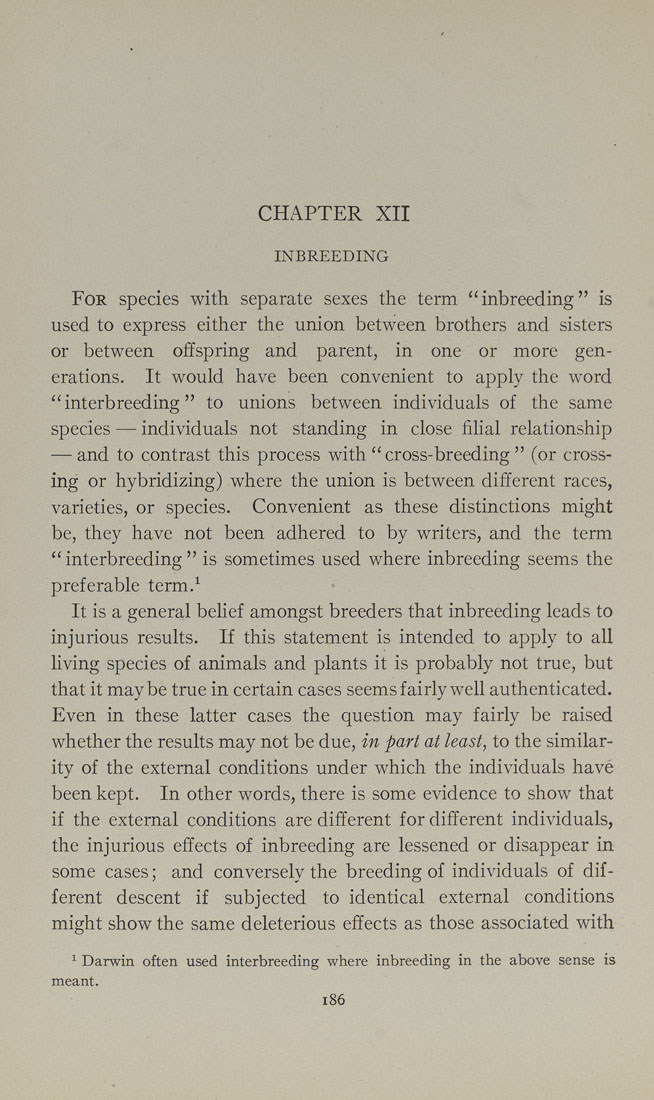CHAPTER XII
INBREEDING
For species with separate sexes the term "inbreeding" is
used to express either the union between brothers and sisters
or between offspring and parent, in one or more gen¬
erations. It would have been convenient to apply the word
"interbreeding" to unions between individuals of the same
species — individuals not standing in close filial relationship
— and to contrast this process with " cross-breeding " (or cross¬
ing or hybridizing) where the union is between different races,
varieties, or species. Convenient as these distinctions might
be, they have not been adhered to by writers, and the term
"interbreeding" is sometimes used where inbreeding seems the
preferable term.^
It is a general belief amongst breeders that inbreeding leads to
injurious results. If this statement is intended to apply to all
living species of animals and plants it is probably not true, but
that it maybe true in certain cases seems fairly well authenticated.
Even in these latter cases the question may fairly be raised
whether the results may not be due, in part at least, to the similar¬
ity of the external conditions under which the individuals have
been kept. In other words, there is some evidence to show that
if the external conditions are different for different individuals,
the injurious effects of inbreeding are lessened or disappear in
some cases; a.nd conversely the breeding of individuals of dif¬
ferent descent if subjected to identical external conditions
might show the same deleterious effects as those associated with
^ Darwin often used interbreeding where inbreeding in the above sense is
meant.
i86
|








